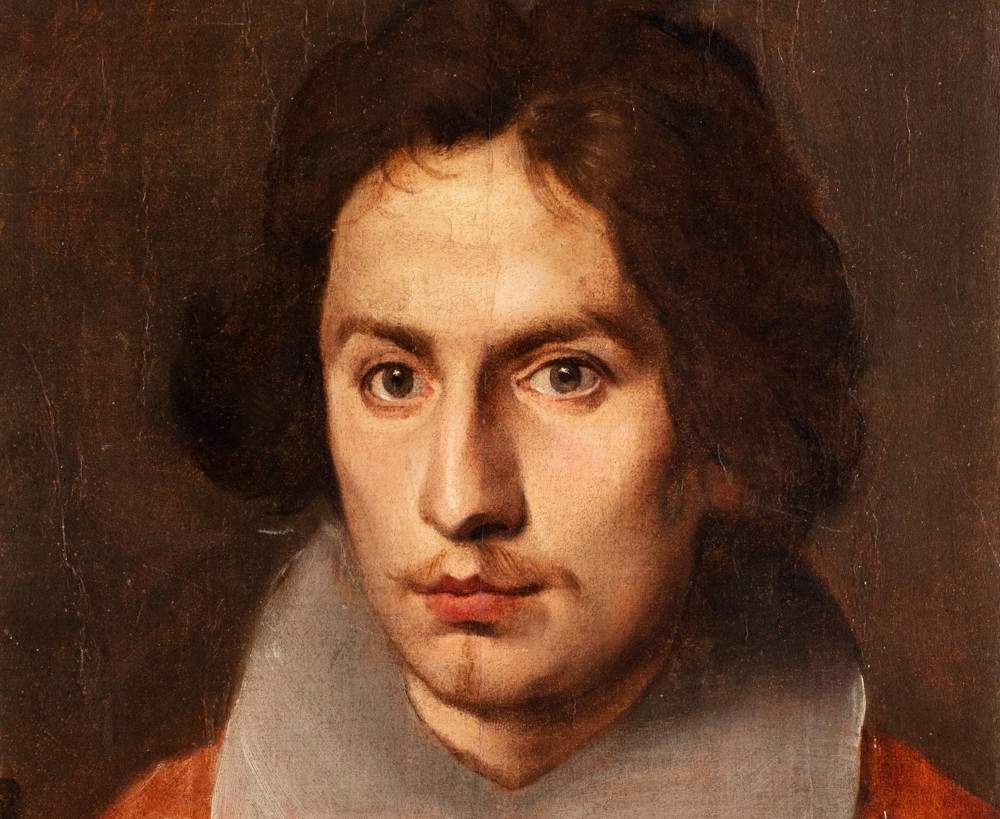Two important new acquisitions for Palazzo Barberini
Two important paintings have become part of the collection of the Gallerie Nazionali di Arte Antica of Palazzo Barberini in Rome thanks to the acquisition by the state on the museum’s recommendation: they are a painting by Giovanni Lanfranco (Parma, 1582 - Rome, 1647), The Death of Cleopatra, and the Portrait of Cardinal Antonio Barberini by Simone Cantarini (Pesaro, 1612 - Verona, 1648).
The former was set up on the piano nobile, next to Venus Playing the Harp also by Lanfranco, who probably used the same model to make the two works. The second was displayed next to the painted and sculpted portraits of Urban VIII and his nephews made by Gian Lorenzo Bernini, Giuliano Finelli, Carlo Maratti, and Lorenzo Ottoni in the Divine Wisdom room, aimed at illustrating the protagonists of the Barberini family.
The two paintings show strong stylistic and compositional affinities and were commissioned by Marco Marazzoli (1602-1662) court musician to Cardinal Antonio Barberini since 1629, who chose to express his deep gratitude for the papal family through the gift of the three works of his own executed by Lanfranco. The acquisition of The Death of Cleopatra recomposes the historical core of the donation, which also includes Erminia among the Shepherds (a version is now in the Capitoline Museums).
As in the case of many other ideal portraits of Cleopatra painted in the seventeenth century, Lanfranco plays on the edge of ambiguity. The artist depicts Cleopatra as a memorable model of sacrifice and at the same time conceives a bluntly licentious image: although agonized, the queen of Egypt remains deeply and explicitly sensual as the stereotype of the character dictates. The essentiality of the composition, with a very small stage setting, is functional to catalyze all attention on the statuesque whiteness of the body, which emerges from the chromatic contrast on the backdrop.
Coming from the collection of the Gennaro Santilli Foundation, in 1974 the Portrait of Cardinal Antonio Barberini had been notified by the Superintendency with attribution to Jacob Ferdinand Voet on the occasion of the Finarte auction sale of the collection of Prince Marcello Del Drago to whom it had belonged, and rediscovered on the occasion of the Finarte auction of Old Paintings held in Rome on September 15, 2020. The painting, an oil on paper applied to canvas, attributed to the artist from Pesaro by Anna Maria Ambrosini Massari, is a preparatory study for the portrait of the young nephew of Urban VIII, who had just ascended to the purple, later made by the same painter on canvas in two versions, one of which is preserved in the Corsini Gallery. Probably executed from life during the young papal legate’s stay in Pesaro in the summer of 1631, on the occasion of the passage of the Duchy to the Church, the work represents a sublime proof of Cantarini’s restless, experimental and eclectic personality from the very beginning.
“The State’s acquisition of two works for the National Galleries of Ancient Art is a cause for celebration and pride for all Italian museums, which once again demonstrate that they are places of cultural reference, with an active and dynamic role in the knowledge of cultural heritage and the promotion of its enjoyment: activities that the State is continually called upon to carry out in implementation of Article 9 of the Constitution,” said Massimo Osanna, director general of the Museums. “With a view to increasing and enhancing the heritage of the National Museum System, the General Directorate of Museums has willingly contributed and participated in this important acquisition process. I express my warmest appreciation and am grateful to Flaminia Gennari Santori and all the staff of the National Galleries of Ancient Art for the work they have done and for filling the gaps that exist at Palazzo Barberini, highlighting some interesting aspects of the collecting and historical events that characterize it.”
“Bringing back to Palazzo Barberini works that were once located here and were dispersed over the centuries, and in a defining way in the 1930s, is a cultural operation of fundamental importance. The Barberinis were among the leading European patrons of the 17th century, and their collection of works of art can be considered the ’manifesto’ of their cultural project,” stressed Flaminia Gennari Santori, director of the National Galleries of Ancient Art. “In less than five years, thanks to the acquisitions made by the National Galleries and the General Directorate of Archaeology, Fine Arts and Landscape, Service IV, and the General Directorate of Museums, Service I, of the Ministry of Culture, four extraordinary works have been acquired from the state: Pompeo Batoni’s Portrait of Abbondio Rezzonico, Pierre-Étienne Monnot’s Model for the Funeral Monument of Pope Innocent XI, and finally Giovanni Lanfranco’s The Death of Cleopatra and Simone Cantarini’s Portrait of Cardinal Antonio Barberini,” he added.
Image: Simone Cantarini, Portrait of Cardinal Antonio Barberini (1631; oil on paper applied to canvas, 48 x 36 cm; Rome, National Galleries of Ancient Art, Palazzo Barberini)
 |
| Two important new acquisitions for Palazzo Barberini |
Warning: the translation into English of the original Italian article was created using automatic tools. We undertake to review all articles, but we do not guarantee the total absence of inaccuracies in the translation due to the program. You can find the original by clicking on the ITA button. If you find any mistake,please contact us.





























